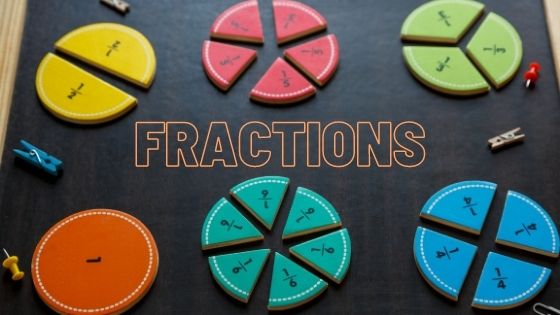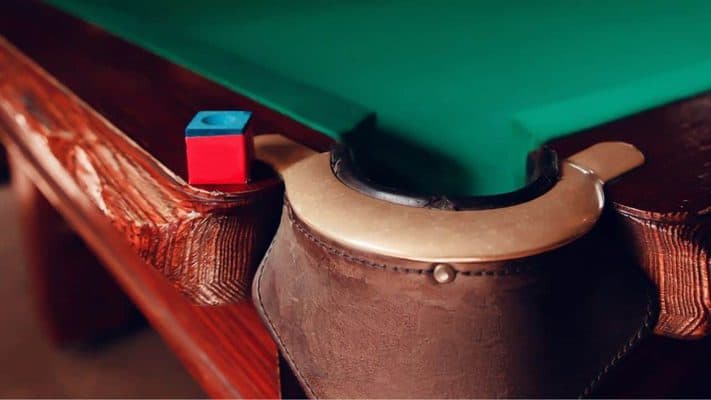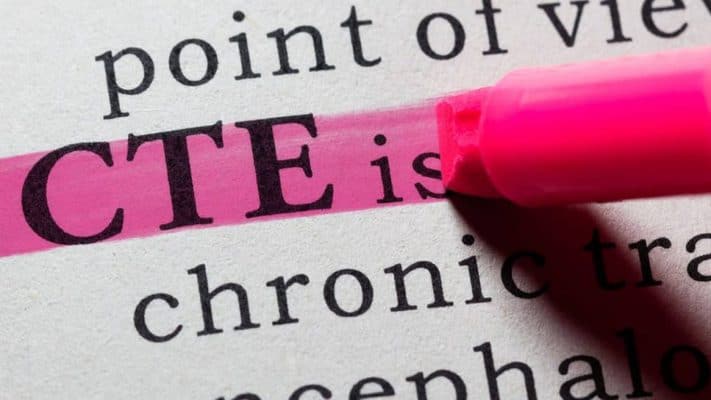What is The Fractional Aiming System?
The Fractional aiming system is a pool aiming system that divides the object ball into sections or fractions in order to judge the potting angle of the shot.
For example, if the cue ball covers half of the object ball at impact from the shooter’s eye view, then that shot is said to be a 1/2 ball shot.
In the half ball shot pictured below, the white ball covers 1/2 of the object ball at impact. In this shot, the player would aim the center of his cue shaft, through the center of the cue ball to the extreme edge of the object ball.

For each angled cut shot, the player needs to imagine what it would look like when the cue ball covers a section of the object ball. Both ball at impact will of course be lined up directly to the pocket.
The fraction is the relationship between the two balls at impact, seen from the shooters view.
What are the Cue Ball Object ball Fractions?
All shot fractions are given a numerical value designation to distinguish one shot from the others.
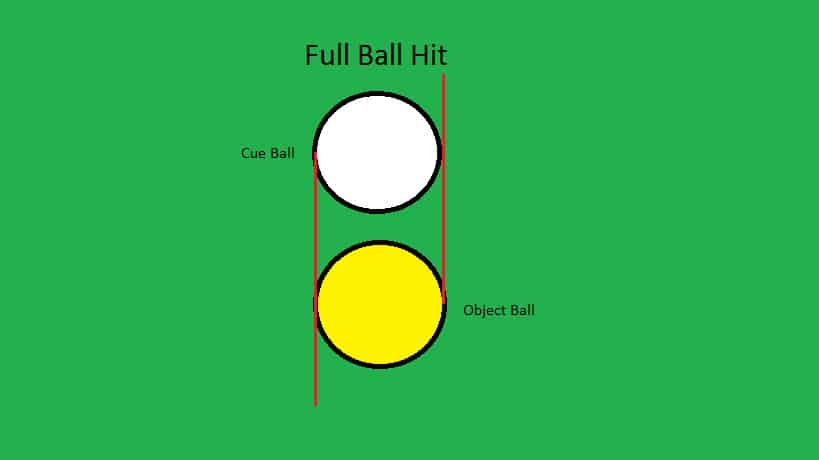
Each object ball is divided into fractions, lets say to begin with we will use 7/8, 3/4, I/2, 1/4, 1/8, plus the full ball contact and the thin edge contact.
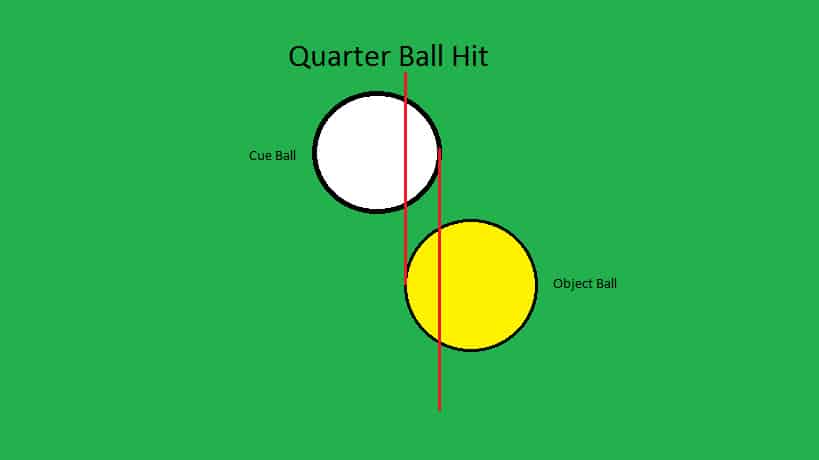
There are simpler versions using only 1/4 ball, 1/2 ball and 3/4 ball relationships, known as the quarters system, which is shown below.
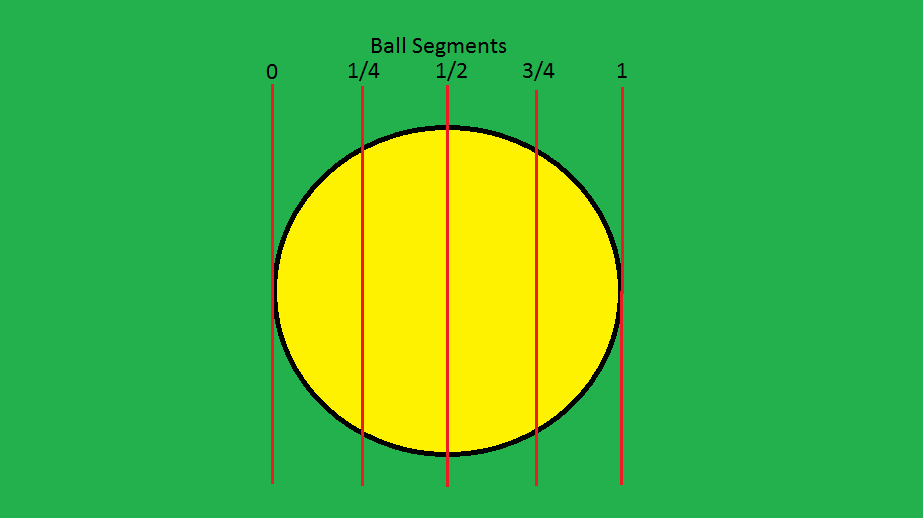
Does Fractional Aiming Work?
Fractional aiming can work for many players, especially those who have the ability to clearly visualize the moment of impact. It like most aiming systems will not work for everyone but it might work for you.
The system allows the player to judge the potting angle by recognizing the relationship between the two balls. In time recognizing shots as 1/2 ball or 1/4 ball for instance.
Giving a sporting action a name encourages the brain to store, organize and recognize repeatable patterns that can be reused in game situations.
What Do These Fractions Look Like to The Player?
Looking down the shot line with the white ball superimposed on the object ball, a certain section of the balls will overlap. For example in the picture below the cue ball covers 3/4s of the yellow ball.
It is therefore called a three quarter ball shot.
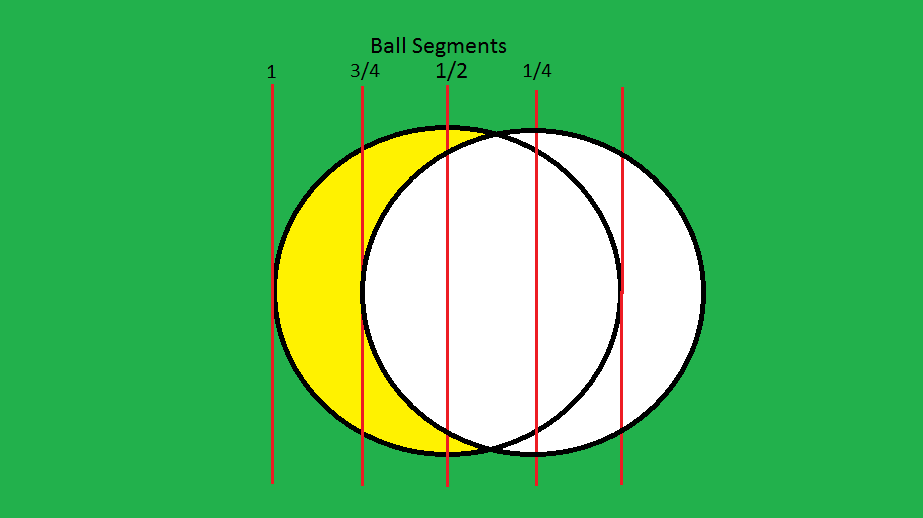
Does the fractional Aiming System Have Limitations?
The fractional aiming system is only limited by the players’ ability to recognize the relationship between the intended shot angle and the fraction.
It is easy to play a half-ball shot, as explained above, but the question is do you know what a half-ball shot looks like.
You must learn the angles by repetition and practice.
The basic fractions work well on small pool tables where the distances are short and the pockets allow a few degrees of flexibility on either side.
As you move to a nine foot table the increased distances begin to demand more accuracy. The further the ball is from the pocket the less there is room for error.
When players get really good at these angles they can recognize smaller and smaller fractions of the ball adding in 1/8, 3/8, 5/8 and 7/8 sections.
CIT gets its own section below.
Fractional Aiming and Cut Induced Throw – CIT.
Cut induced throw or CIT occurs when two balls collide at any angle. At impact, the balls momentarily cling together moving in the initial direction of the white ball.
CIT causes the object ball to take a different path towards the pocket, making it seem like the balls made a “thicker” contact than expected.
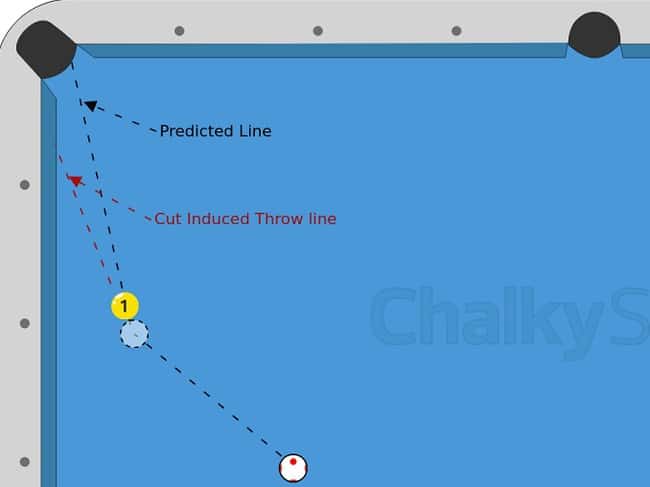
Cut induced throw is made worse by:
- Thinner angles.
- Slow Speeds.
- Elevated cue shaft.
The Importance of Consistant Shot Speed.
Here is a little test for you to tryout in practice. Set up a long cut shot down the long rail. Mark the position of the balls on the table with reinforcemnet rings. Play a number of shots until you are pretty sure that you will make the ball.
Now taking aim as before:
- Play another shot at slow speed.
- Then Play a shot with high speed.
- Cut one in with stun.
- Add some inside English.
- Another shot with inside and draw.
Each time that you vary the speed you will get a different result!
When you watch the pros play, most of their shots are played at a similar speed. Big variations in shot speed will give inconsistant results.
Play most of your shots inside a given range of speeds for more consistant results
How to Compensate for CIT.
Players must learn to aim slightly thinner or use a little outside English / running side spin to compensate for the throw.
Gearing, helping or outside English allows for a thicker contact on the object ball and therefore counteracts the cut induced spin.
This allowance is a judgment call and the amount of adjustment needed will become clear after practice and plenty of trial and error.
Best Practice Routines For Fractional Aiming.
Angle recognition is everything with this system. Set up known shots into a pocket and mark the locations of the balls with ring reinforcer donuts.
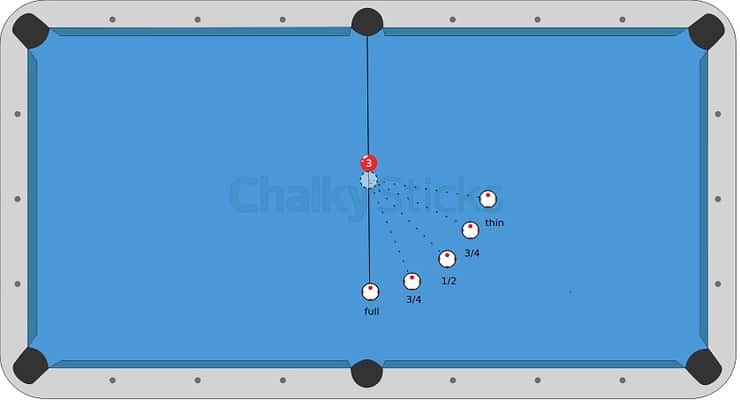
The repetition helps you to recognize the different angles until they become obvious and second nature.
Name each shot as it is identified:
- Observe the shot
- Recognize the angle
- Name the angle
- Shoot the ball
- Assess the result
- Make necessary adjustments
- Repeat
Repeat these shots until you are confident at assessing the angle then move the balls further away from the pocket.
Should You Use Fractional Aiming To Improve Your Game?
You should try out everything to do with aiming that you can lay your hands on. Experimentation and an open mind to new things is a great help in pool.
Try it out, it clicks with some players more than others and if it works for you fractional aiming could improve your game.
Do I Use Fractional Aiming?
I do use fractional aiming when practicing certain routines and to help when coaching.
I do not use it ever when playing in a competition. I was never able to make aiming systems subconscious for that purpose.
Recommended reading For Detailed Information.
Poolology book and Information on AZ Billiards.com & Dr Dave
